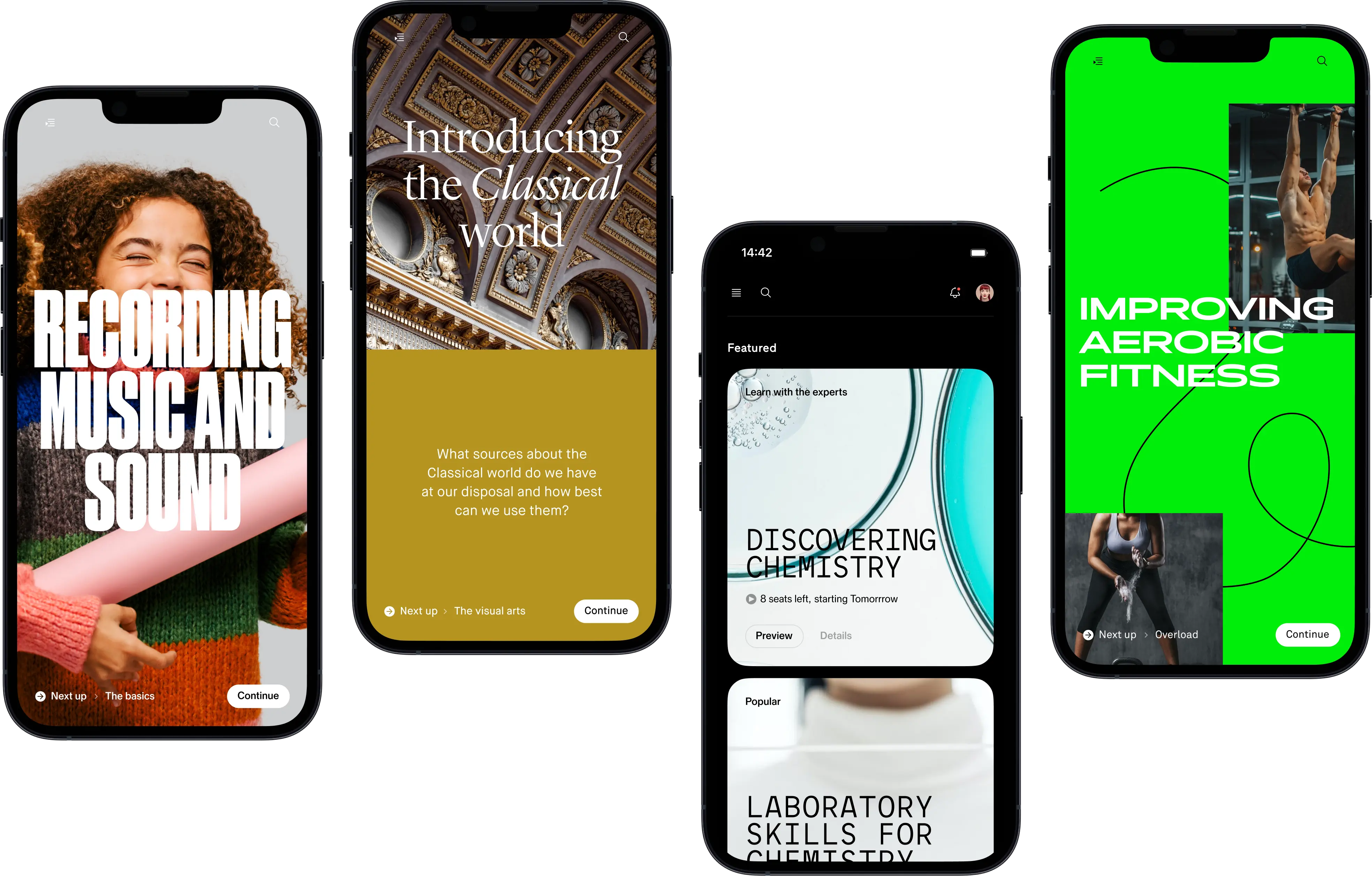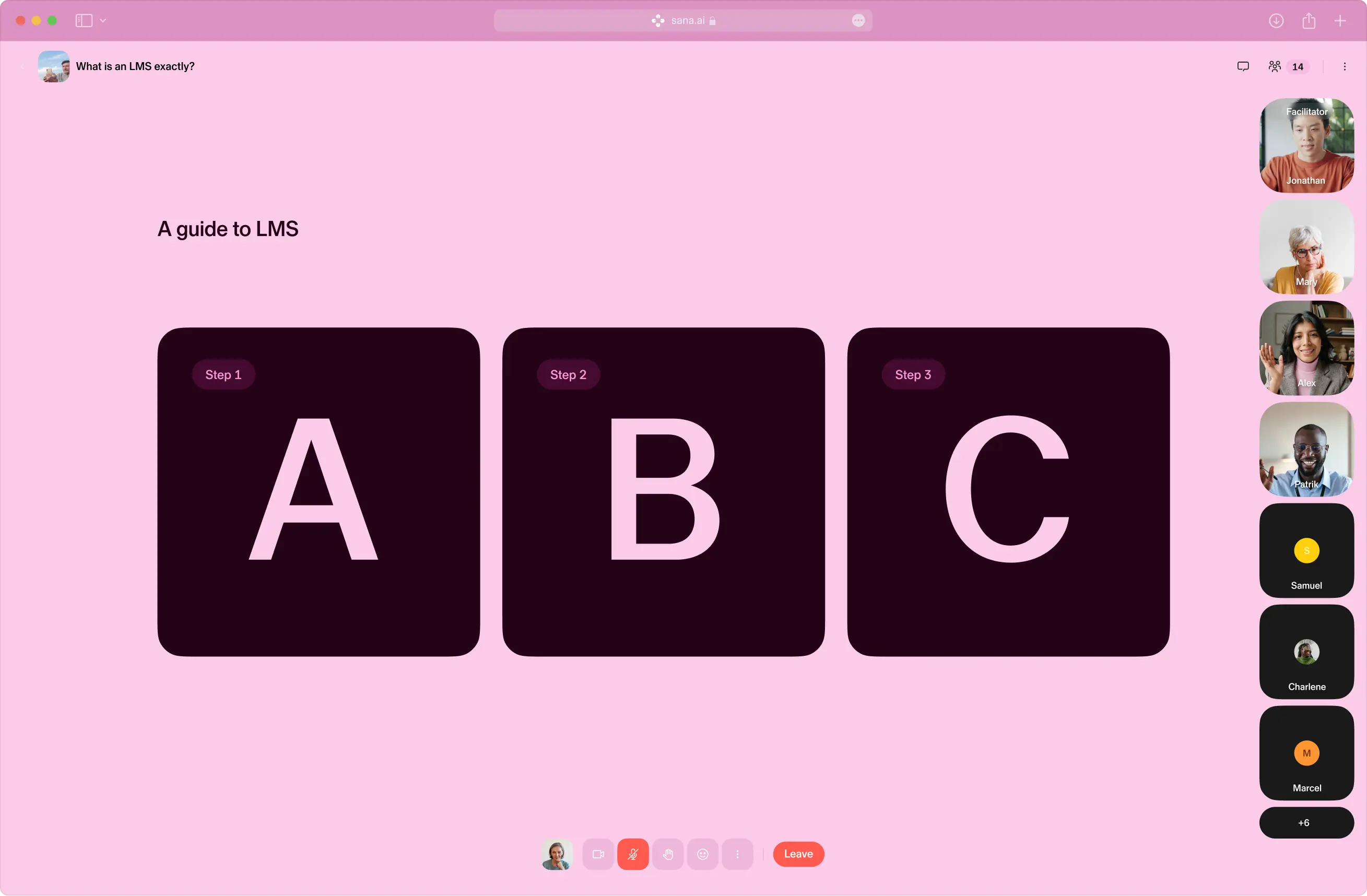How to build a business case for your new learning platform

In your eyes, the case is clear: your learners need the best. Yet even when learning is high on the strategic agenda, it can be challenging to convince senior stakeholders to commit to the budget your learners deserve.
So how do you help them see the future, where the 45% of people who’d move jobs for better learning, are coming to you? Where your online learning platform is at the heart of a business-wide learning culture?
It all starts with learning. Learning where your organization is headed, how your existing tools are performing, what your employees think. And using that data to justify change.
Here are the 8 steps to building a bullet-proof business case for your learning platform.
Step 1
Understand the strategic role of learning
At this stage, your job is to understand:
- Where is the business now?
- Where do we want to be in 5 years?
- How will learning get us there efficiently?
The answers could look like this:
We’re based in London and we love the hybrid working model. We’re a much more diverse team because of it, but some staff never come to the office. How do we ensure everyone feels connected?
In 5 years, we’ll still be async, with 5,000 people across the globe. We’ll have offices across EMEA. The pressure to retain and attract top-quality talent will be extremely high. Learning has got sync with the employee’s own pace. If we make another pivot, we’d need to upskill and reskill a lot of people. How do we prepare them for embracing change and ensure they reach their full potential'?”
We can’t predict the future, but we can prepare for it. The more you know how your organization could evolve, the easier it is to assess which providers will support you best on that journey.
Step 2
Assess the quality of your existing L&D program
Even if you don’t have a platform, learning is happening in your organization. What does that learning look like? How well is it serving the teams? Here are some questions to help you understand your baseline.
Feedback on learning
- How do we measure the efficacy of our learning initiatives?
- What feedback do we have on our current L&D program?
- Can I track people’s engagement levels and completion rates?
- Do our courses allow people to go at their own pace? If not, would it help completion rates?
- Would we like to increase social learning?
- Can we measure the impact of learning initiatives on business performance?
Tech assistance in learning
- How responsive is the platform? If someone is struggling with course content, how does the platform help people to improve their knowledge?
- How well is learning data integrated into our tech stack, such as HR systems or CRMs?
- How do we facilitate online learning?
- What percentage of our learning admin tasks require manual work?
Hands-on time
- How long does it take to create prep live sessions?
- Can we author our own sessions, or do we have to pay an additional fee?
- Are we getting great customer service?
Once you have the answers to these questions, compare your findings to the business scenario you uncovered in step one. Will your existing learning platform or current initiatives help you reach those 5-year goals?
Step 3
Put your discovery hat on
Discovery is a process that agile product teams use to help them build the right things for their customers. Key to that process is customer research.
In L&D, our customers are our learners. The better we understand their world, the greater our chances of choosing the right digital learning platform.
This is where quantitative and qualitative data come in. The quantitative data show you what your customers are doing or thinking. For example, how much learners use or appreciate the learning program you have today. Qualitative data tell you why they behave and think the way they do. Together, these data can provide powerful evidence for change.
Get quantitative - survey your workforce
Surveying is a fantastic opportunity to collaborate with HR or Marketing. And you don’t need an advanced HR stack to do it. A quick Google Forms, typeform or Slack poll will usually do the trick.
Potential survey questions:
- In the past month, how many times did you take part in any voluntary learning?
- On a scale from 1-10, how would you rate the quality of the course content in the last mandatory training you took?
- On a scale from 1-10, how would you rate the quality of the platform based on the last mandatory training you took?
- On a scale of 1-10, how interested are you in learning from other students (colleagues)?
- On a scale from 1-10, how relevant are our organization’s current learning initiatives for your current role?
- On a scale from 1-10, how relevant are our organization’s current learning initiatives for your future career interests
At the end of your survey, invite employees to leave an email address if they would like to participate in follow-up interviews.
Get qualitative - find personal stories that resonate
1:1 interviews are more than a research tool. They show your employees that L&D cares and takes their feedback seriously. Aim to hold at least 5, so that you can start to uncover recurring themes.
Potential 1:1 interview questions:
- When you applied to work with us, how important was our learning program?
- You’ve said you don’t participate in many voluntary learning initiatives. Why is that?
- Walk me through the last time you used our learning platform. How was the experience?
- Do you have enough time to engage in learning? Would going at your own pace help you to engage in more learning?
- How well does our learning program help you to achieve your goals and build new skills?
- When you hear about a new training, how do you feel? Excited? Interested? Bored? Irritated?
- What do you wish we were doing with learning that we aren’t today?
- Are we living up to our Employer Brand promise? How so? Do you think that L&D is important to the business? Why is that?
Ask an extra why at every opportunity; it’s where the golden insights lie. And remember: the best predictor of future behavior is past behavior. If you ask how likely someone would be to do something in the future, they will give more optimistic or socially acceptable answers.
Last but not least, take a lot of notes. These quotes and stories will play a powerful role in your business case story—which we’ll come to in step 8.
Step 4
Learn what teams need from L&D
Once you’ve interviewed your customers (employees), it’s time to collaborate with your colleagues. The stakeholder workshop is an ideal format. You can gather representative leaders from all core functions. Collectively explore how you work with skills development now, and what will be needed to deliver the business’s mission.
Workshop questions to explore current and future skills
- Are there roles that you’re struggling to fill? Has that changed? Why?
- How well do we measure skills today? How would we like it to be in the future?
- Do people prefer to learn at their own pace? Why?
- When should we be measuring skills?
- What types of new skills will we need in the future?
Workshop questions to explore current and future partnerships
- How well does our current L&D roll-out support our mission and vision?
- What do your teams say about our learning initiatives and tools?
- How easy is creating courses and scheduling assignments?
- What is the feedback HR gathers about existing learning initiatives?
-
- How well are we meeting employee expectations?
-
- How well does our LMS represent our employer branding?
- What would make your lives easier?
Tip: Try the $100 exercise. It’s a fun way to understand where your colleagues would prioritize spending, and why.
After the workshop, look for recurring themes. Just as with your employee interviews, you’ll want these in your business case.
Step 5
Create a shortlist of learning providers
The e-learning market was worth US $315 billion in 2021. That's a lot of providers. How should you evaluate them? When assessing who to shortlist, make sure to compare:
- Company mission and values
- Current feature set
- Product vision and roadmap
- Partnership compatibility
Behind every great platform is a team of people. Are those people you want to work with? This question is more important than you think.
Step 6
Demo providers with your highest-impact team
You’ve interviewed your employees. Now it’s time to get them in on the action and let them try the platforms you’re considering.
Using your highest-performing team is a great tactic. Present the team with your shortlist of providers, explaining the benefits and limitations of each. Listen to and understand what this team needs from a digital learning platform, what high quality courses look like to them, and let them pilot each provider, and feedback which they prefer.
If you’ve chosen your shortlist well, you should be happy to work with any provider on the list. Let the evidence, testimonials, and feedback from this highly engaged team narrow that list down to a clear winner.
Step 7
Quantify the cost of doing nothing
In any negotiation, your audience needs to know the cost of inertia. Even with all the positive examples you present, you need to be able to demonstrate how inactivity will damage the business.
Take Sales:
"It currently takes us 3 months to onboard and skill new Sales Development Reps (SDR). That costs us £XXXX per SDR. With an agile online learning platform, that integrates with our HR tech stack, we can:
- Tailor trainings to each SDR, meaning only necessary trainings are allocated, reducing overall training time by 20%
- Provide HR with insights about each SDR, reducing review prep time by 15%
- Update SDR training in real time, saving 1 month staff time every year"
Time and cost savings like these are hard to ignore. If you’re struggling to run the numbers, call in a favor from Finance. After all, these figures will benefit them too in the long run.
Step 8
Bring your story together
It takes more than numbers to persuade. To make your final business case document or presentation, you need a story arch that's logical, powerful, and compelling.
Here’s how you bring together everything you learnt through the previous steps.
Your 4 part story arc
Part 1 - Grab their attention
Part 2 - Present the facts
Part 3 - Highlight the danger zone
Part 4 - Tease the promised land
Part 1 - Grab their attention
- Is a change in your industry keeping your budget holder up at night?
- Is there a risk the company should be turning into an opportunity?
- Why is learning the answer?
Part 2 - Present the facts
- Statistics from your survey that highlight any low engagement
- Employee quotes from your interviews that prove the need for change
Part 3 - Highlight the danger zone
- The overall cost of inaction
- The company’s current skills gap
- The potential risk to Employer Brand
- The potential employee attrition and churn
- Time and cost wasted, for example in HR and hiring managers
Part 4 - Tease the promised land
- Your proposed learning platform as the solution
- Why your new online learning platform will:
-
- address employee pain points
-
- close the company’s skill gaps
-
- protect Employer Brand
-
- save time and money
-
- increase employee engagement and retention
- How you see the partnership evolving over at least 5 years
- Cost of the new learning platform and estimations of the business benefit
- How Learning will enable the company to achieve its strategic goals
A structured story gives you confidence, shows your budget holders they are in safe hands, and demonstrates your expertise. You don’t have to build that story alone—ask your new learning platform provider for the support you need to get it pitch perfect.
Secure the learning platform your teams deserve
Solid data and nuanced storytelling. That’s what lies behind a brilliant business case. It takes a lot of learning to get there, but that’s what L&D does best.
Your ABC guide to the LMS
Read article
